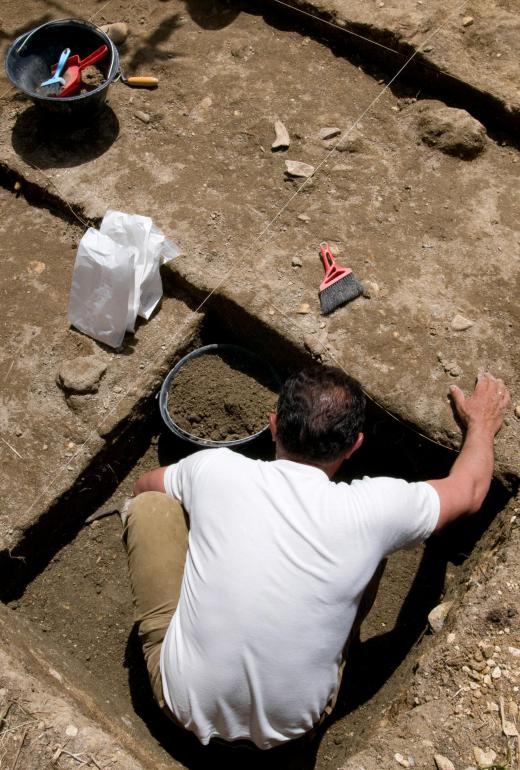What Is Applied Archaeology?
Archaeology is the excavation and study of human behavior, societies, and culture. Fields of archaeological study begin with prehistoric man and stretch through every period of history. Applied archaeology occurs when the information gleaned from a particular dig site could be used to aid modern society. Those practicing applied archeology most often study ancient technologies pertaining to architecture and agriculture. Many of these practices are applied to impoverished societies in need of simple, inexpensive technologies to improve their quality of life.
Ancient societies typically only had access to manual tools and local resources. Yet archaeologists have discovered that many of these cultures were able to build durable housing, raise flourishing crops, and build structures for water transportation and sewage containment. Societies in third-world countries often face a lack of shelter, viable farming ground, and are rife with disease caused by stagnant water. Through applied archaeology, historians can help recreate the techniques that the ancients used and teach them to those in modern developing countries.

Most of the architectural techniques that have lasted millennia took the ancients decades and thousands of workers to build. Therefore, those practicing applied archaeology are typically more interested in the structures in which the common people lived. Homes made of mud daubing, lathe, and wood were common, as were homes made of soil bricks or carved into the sides of mountains. Some of these simpler techniques can be taught to those living in modern poverty-stricken areas to help them create insulated, clean, and safe housing from the local resources.

One of the most important areas of applied archaeology is agriculture. Learning how ancient cultures grew and irrigated their crops in challenging landscapes may help impoverished areas develop a higher standard of living. Historical study has shown that raised fields, or areas of arable soil built above marshy or arid land, could be a benefit to those who live in fairly barren landscapes.

There is also evidence to suggest ancient cultures had knowledge of crop rotation and developed technology to irrigate fields. Applied archaeology seeks to harness these techniques, often taken from an area’s past, for use in its present. For instance, those living in the hot African landscape may greatly benefit from knowing how their ancestors thrived on the same land. Archaeologists can learn how this was done and help the natives apply such lost knowledge to their current lifestyles.
Ancient societies often understood the need for clean water and protection from sewage and human waste. To this end, they created simple but effective water filtration systems made from sand, charcoal, mud, and leaves. These same kinds of water filters have been recreated and are in use in some present-day developing areas. Historians are also attempting to recreate ancient sewer systems to help modern peoples control waste-borne disease. Many villages featured simple outhouses, trenches, and other systems to separate themselves from waste and disease.
AS FEATURED ON:
AS FEATURED ON:













Discuss this Article
Post your comments